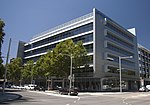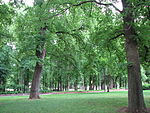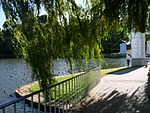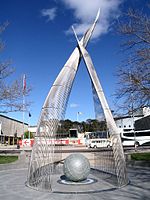National Convention Centre Canberra

The National Convention Centre Canberra is a convention centre located in Canberra, Australia, which opened in 1989. The Centre is Canberra's largest, purpose-built functions, meetings and events venue, and is managed by InterContinental Hotels Group. It provides a collection of more than 13 spaces over two floors. The Centre hosts sporting events, concerts, trade fairs and meetings. The Royal Theatre, the largest space, can accommodate 2,460; the Exhibition Hall has space for up to 2,000. In 2005, the Centre underwent a $30 million capital upgrade.Eric Clapton performed at the venue on 10 November 1990 during his Journeyman World Tour in front of a sold-out crowd of 10,000 people. On the evenings of 12 and 13 March 2009, a reformed Midnight Oil, with Garrett, played at the Royal Theatre.
Excerpt from the Wikipedia article National Convention Centre Canberra (License: CC BY-SA 3.0, Authors, Images).National Convention Centre Canberra
Constitution Avenue, Canberra City
Geographical coordinates (GPS) Address External links Nearby Places Show on map
Geographical coordinates (GPS)
| Latitude | Longitude |
|---|---|
| N -35.284619 ° | E 149.134523 ° |
Address
National Convention Centre
Constitution Avenue 31
2601 Canberra, City
Australia
Open on Google Maps






